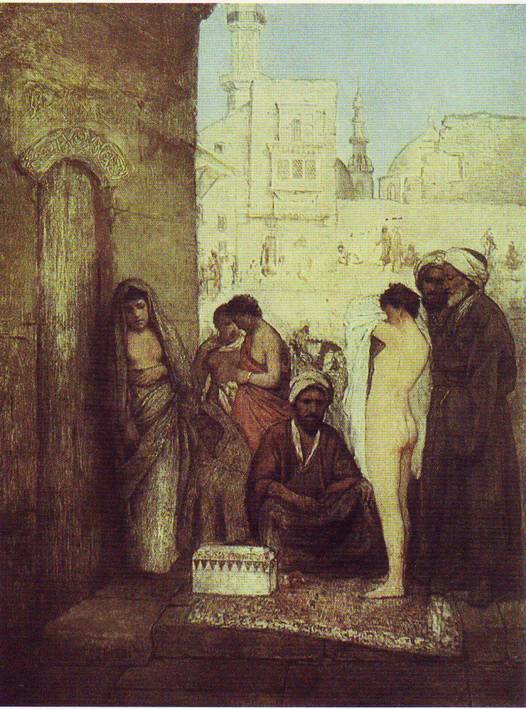Maurycy Gottlieb, Cairo Slave Market, 1877
9.84 x 15.75 in.
Maurycy Gottlieb (1856-1879) was a Polish-Jewish painter of the Romantic period. Born in Galicia (now in Ukraine but at the time it was part of Poland), he was one of eleven children. At fifteen he enrolled at the Vienna Fine Arts Academy, and then two years later went to Krakow to study there. An anti-semitic incident prompted Gottlieb to leave the Academy in Krakow and travel to Norway, back to Vienna, Munich, and Rome. He was convinced to return to Krakow in 1878 by his former teacher, Jan Matejko, to work on a series of monumental paintings, including scenes of Jewish history. In 1876 he won a medal in Munich for his Shylock and Jessica, depicting a scene from The Merchant of Venice. Like many Romantics, Maurycy was very taken with Orientalism. He frequently painted pieces with Jewish themes, such as Ahasuerus, the Wandering Jew (1876) and Salome's Dance (1879). He also painted many portraits. Cairo Slave Market is one of Maurycy's Orientalist pieces; he includes architecture of Cairo in the background. The scene is one of great pathos, the sadness most clearly signified in the woman on the far right leaning against a wall. Despite the poor quality of the image I found, we can see the exhaustion and pain in her face and body language. The woman on the right, stripped nude for the inspection of potential buyers, appears humiliated, covering her face. Meanwhile, the man selling the slaves gazes out at the viewer with a cold expression. The intensity of feeling that pervades this painting is present throughout Maurycy's work; he was a man of great passions, as evidenced by his 1876 self-portrait. In 1878 Maurycy proposed marriage to Laura Rosenfeld (the celebrated writer and educator Laura Henschel-Rosenfeld), on whom he had based Jessica's face as well as other subjects, but she rejected him to marry a Berlin banker. When he heard of her marriage eighteen months later, Maurycy is said to have intentionally exposed himself to the elements, and soon died of the illness contracted. However more than 300 sketches and paintings by Maurycy survive and he is now considered one of the greatest Polish painters of his era.

No comments:
Post a Comment